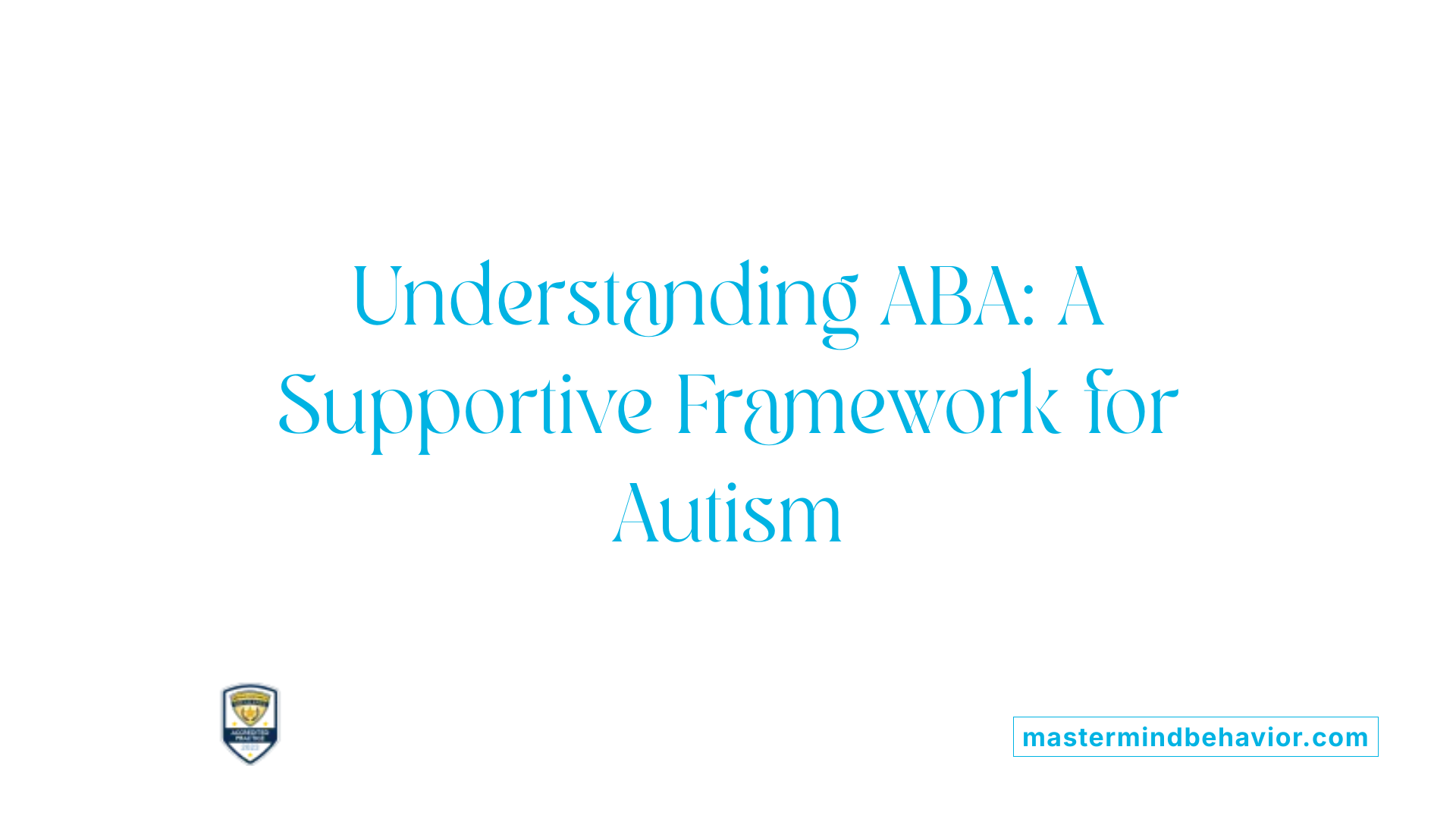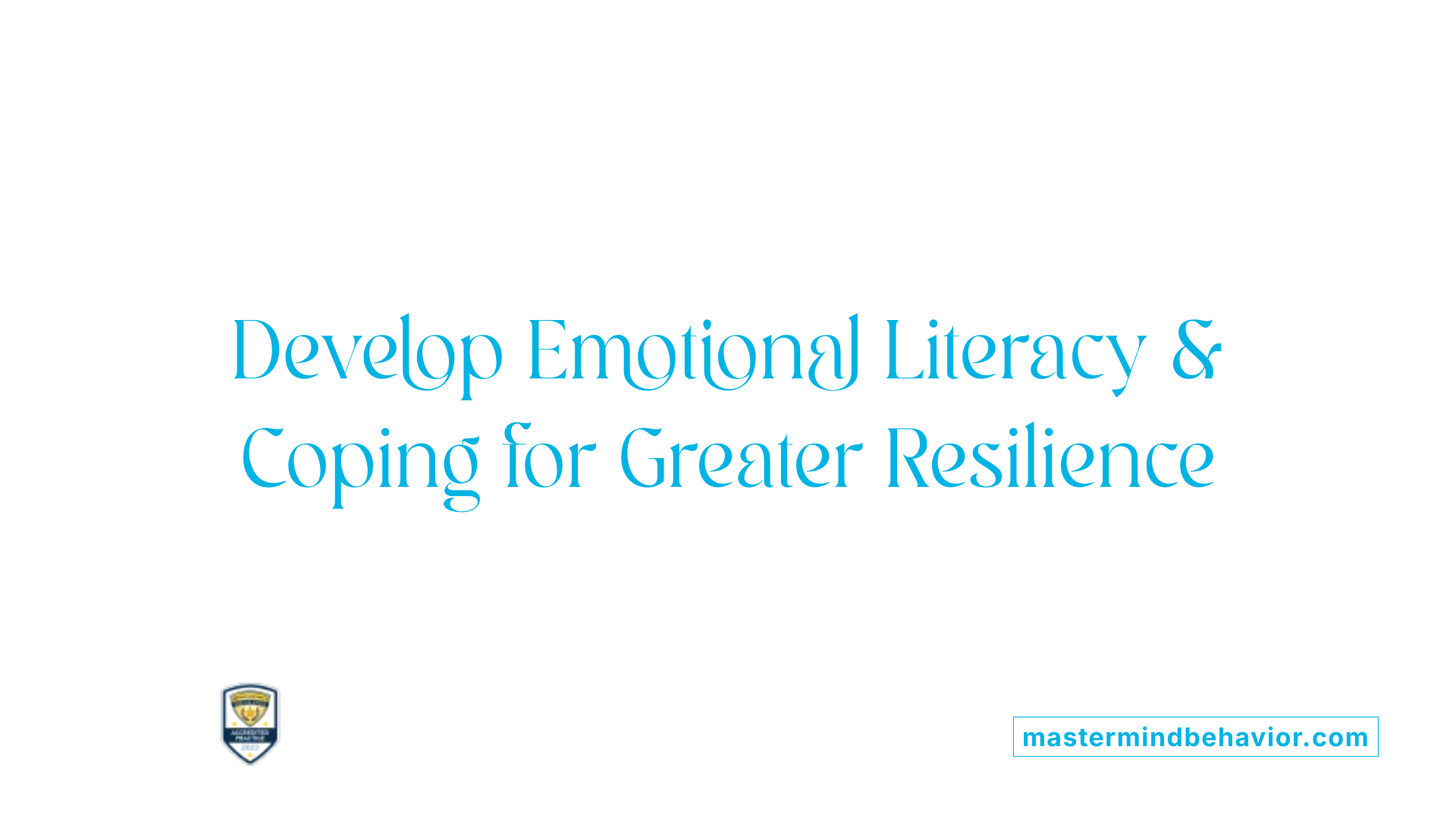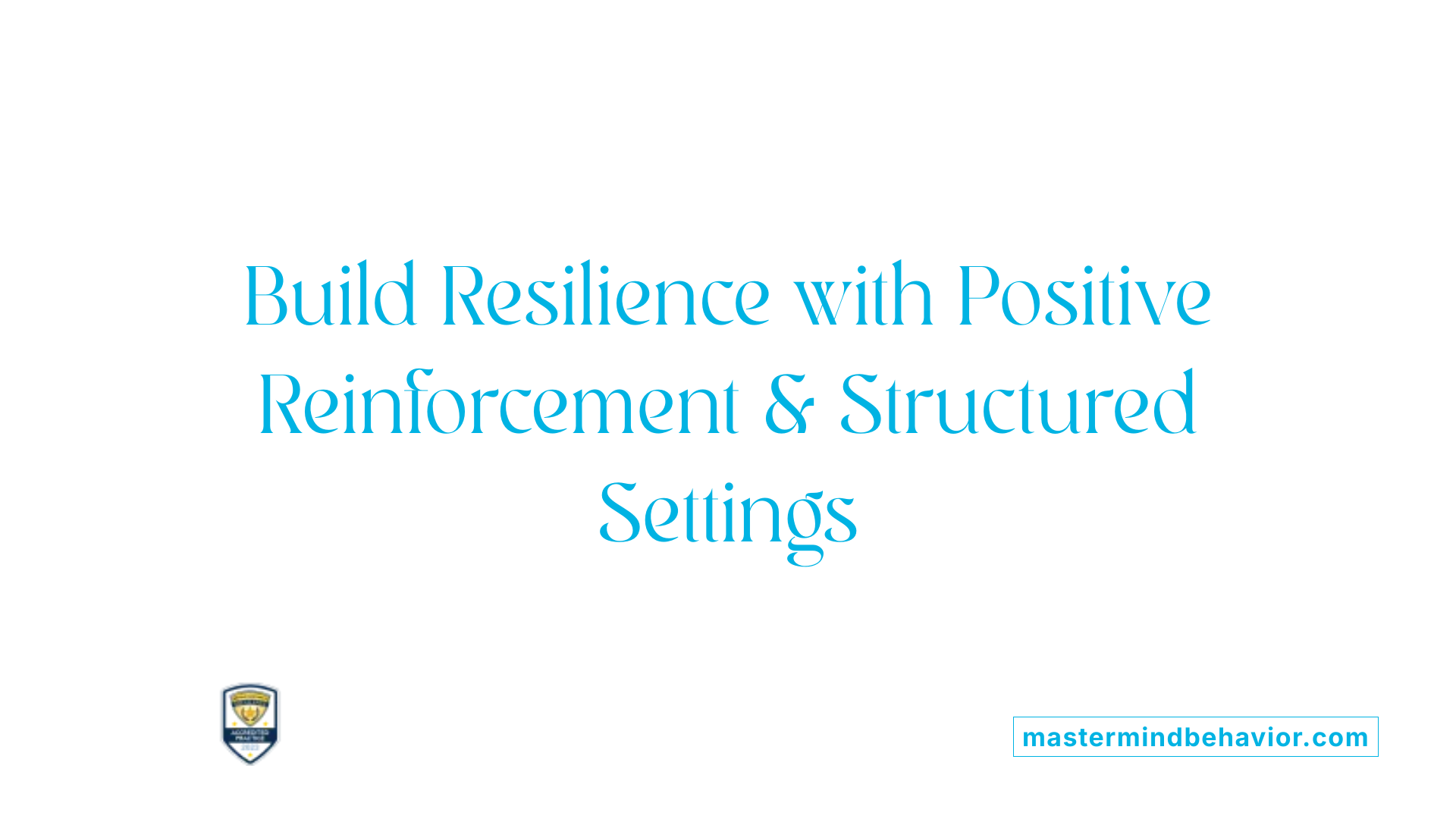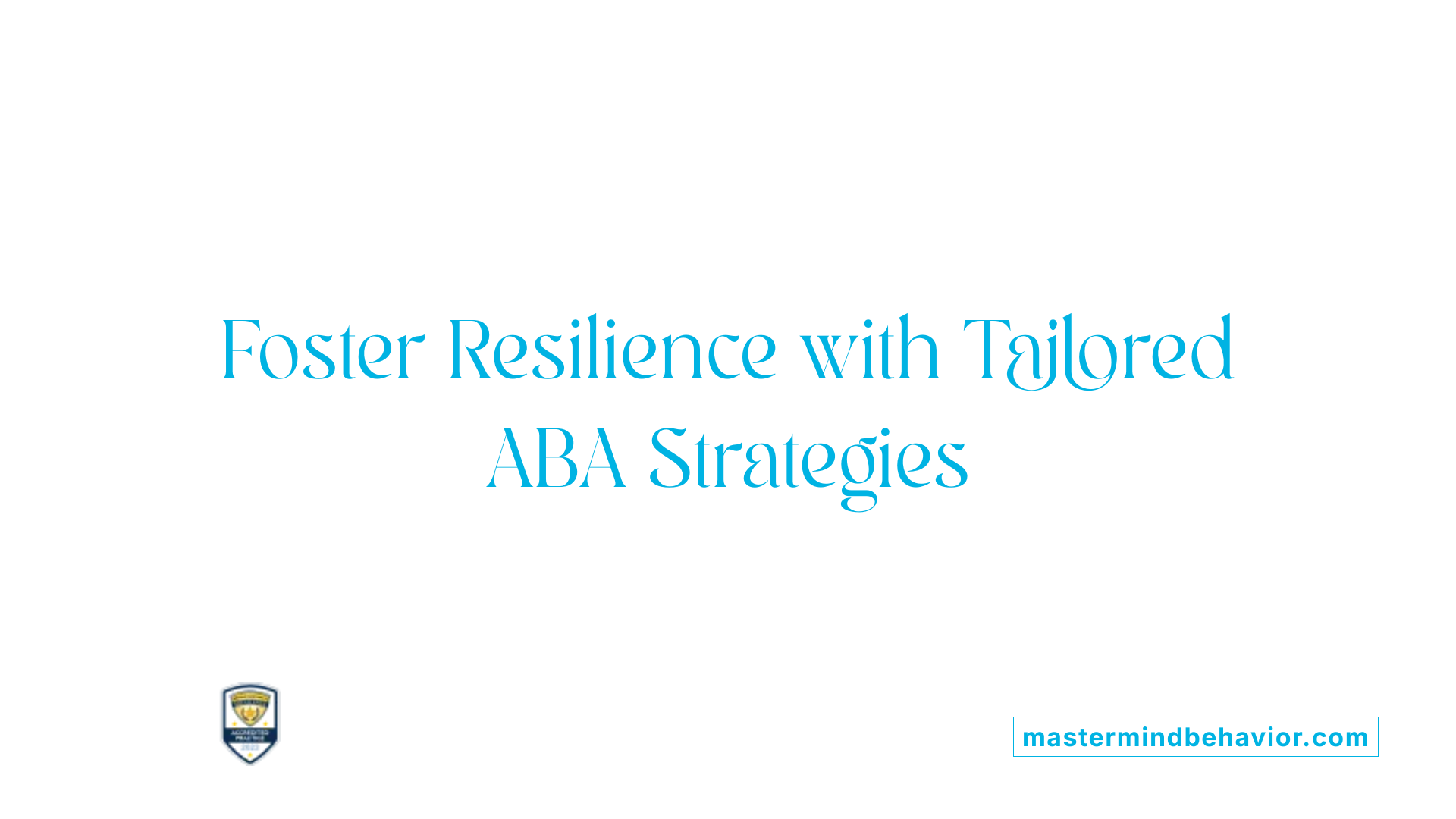Understanding the Role of ABA Therapy in Fostering Resilience
Applied Behavior Analysis (ABA) therapy is widely recognized as a foundational, evidence-based approach for supporting individuals with autism spectrum disorder (ASD). While its traditional focus has been on improving communication, social skills, and daily living abilities, a critical but sometimes overlooked area is how ABA strategies can be tailored to help children with autism develop resilience to criticism. Resilience—the capacity to recover from setbacks and adapt to challenging situations—is vital for emotional well-being and social success. This article explores key ABA therapy strategies used to cultivate this essential trait, integrating behavioral science with therapeutic practice to empower children with autism to cope effectively with criticism and related stressors.
Introduction to ABA Therapy and Its Supportive Framework for Autism

What is Applied Behavior Analysis (ABA) Therapy and How is It Used to Support Individuals with Autism?
Applied Behavior Analysis (ABA) therapy is a scientifically supported approach that focuses on teaching new skills and encouraging positive behaviors in individuals with autism. Its foundation lies in understanding how behavior is influenced by the environment. ABA uses methods such as positive reinforcement—rewarding desired actions—to help increase helpful behaviors like communication, social interaction, and daily living skills.
Each ABA program is carefully tailored to the individual’s strengths and challenges, guided by assessments from qualified professionals such as Board Certified Behavior Analysts (BCBAs). ABA therapy can be delivered in various settings, including homes, schools, and community spaces, providing flexible support based on the person's needs.
What are the Core Principles of ABA Therapy?
ABA therapy is structured around the 'ABCs': Antecedent, Behavior, and Consequence. This model helps therapists understand what triggers a behavior (antecedent), the behavior itself, and what follows it (consequence). By modifying antecedents and consequences, therapists encourage desirable behaviors and reduce unwanted ones.
How is ABA Therapy Applied and Tailored?
ABA's versatility allows it to support not only autism but also other conditions like traumatic brain injuries or substance abuse. For autism, therapists develop individualized Behavior Intervention Plans after conducting a Functional Behavior Assessment (FBA) to identify specific needs. This personalized way ensures ABA meets each child's unique challenges and goals.
What Key Methods Does ABA Therapy Use?
Several specialized techniques make ABA effective for learning:
- Discrete Trial Training (DTT): Breaks skills into small, structured lessons with repeated practice, boosting language, play, and life skills.
- Natural Environment Teaching (NET): Uses everyday situations and familiar items to teach skills naturally and comfortably, helping children apply what they learn in real life.
- Positive Reinforcement: Rewards such as praise, tokens, or favorite activities follow desired behaviors to motivate repeated success.
Together, these methods create a supportive and engaging framework that helps children with autism develop meaningful skills and improve their quality of life.
Qualified Professionals Behind ABA Therapy Delivery
Who typically provides ABA therapy for autism?
ABA therapy is delivered by a specialized team of trained professionals who focus on behavioral interventions tailored to individuals with autism. The primary providers include Board-Certified Behavior Analysts (BCBAs), who conduct comprehensive assessments and design individualized treatment plans. Registered Behavior Technicians (RBTs) work closely with clients to implement these plans through hands-on therapy sessions.
Licensed Behavior Analysts (LBAs) and other trained staff also contribute to delivering ABA services, ensuring a collaborative approach to meet each person’s unique needs. This team-based structure helps maintain high-quality, consistent care.
Importance of credentials and team approach
Credentials like BCBA and RBT indicate a professional’s training and expertise in ABA techniques, which is crucial for effective and ethical therapy. These qualifications ensure that providers use evidence-based methods supported by ongoing research and best practices.
The team approach allows for continuous communication among specialists, caregivers, and educators, fostering a supportive environment for the individual’s progress.
Settings where ABA therapy occurs
ABA therapy can take place in diverse settings, such as the individual’s home, schools, clinics, and community environments. This flexibility helps generalize skills across different contexts, making learning more natural and functional.
How tailored programs enhance effectiveness
Before starting therapy, a BCBA performs a Functional Behavior Assessment (FBA) to identify strengths, weaknesses, and specific needs. Using this information, the team develops a personalized Behavior Intervention Plan (BIP) that guides the therapy.
Tailoring programs to address meaningful daily living skills, communication, and social abilities increases the therapy’s relevance and effectiveness, ultimately promoting greater independence and quality of life for individuals with autism.
Building Resilience Through Emotional Literacy and Coping Skills

What Challenges Do Children with Autism Face Related to Resilience?
Children with autism often experience unique challenges that affect their resilience. These include sensory sensitivities that can make everyday environments overwhelming, difficulties in social communication, struggles with emotional regulation, and heightened anxiety. Such challenges can hinder their ability to recover from setbacks or adapt to new situations.
How Can Emotional Literacy Be Taught Using Visual Aids?
Teaching emotional literacy is essential to help children with autism recognize and express their feelings effectively. Visual aids like emotion charts, pictorial flashcards, and social stories serve as valuable tools. These visual supports make abstract emotions tangible and easier to understand, enabling children to identify and communicate their feelings more confidently.
What Calming Techniques Can Support Emotional Regulation?
Incorporating calming techniques into daily routines empowers children to manage stress and emotional overwhelm. Deep breathing exercises help regulate physiological responses to anxiety. Mindfulness practices encourage present-moment awareness and reduce tension. These approaches, often integrated within ABA therapy, foster self-soothing skills critical for resilience.
How Are Coping Skills Developed, Including Problem-Solving and Seeking Support?
Developing coping skills involves teaching problem-solving strategies that help children navigate challenges methodically and independently. Encouraging them to seek support from trusted adults strengthens their social safety net and provides emotional comfort. Engaging children in activities aligned with their interests also offers constructive outlets for managing stress.
Through a combination of these focused strategies, interventions aim to nurture resilience in children with autism, promoting their ability to adapt and thrive in various situations.
Social Skills Development and its Impact on Handling Criticism

Social Communication Difficulties and Anxiety in Autism
Children with autism often experience social communication challenges and heightened anxiety, which can make handling criticism particularly difficult. These difficulties may include trouble understanding social cues, initiating or maintaining conversations, and interpreting others' emotions, all of which contribute to feelings of vulnerability.
Strategies Including Social Skills Groups, Role-Playing, and Visual Supports
To address these challenges, structured social skills groups can provide a safe environment for practicing interactions. Role-playing exercises enable children to rehearse handling criticism and other social scenarios. Visual supports, such as social stories, help clarify social expectations and guide responses, making abstract concepts more concrete and accessible.
Teaching Conversational and Assertiveness Skills
ABA therapy techniques focus on teaching conversational skills like turn-taking, maintaining topics, and recognizing nonverbal signals. Additionally, assertiveness training empowers children to express their feelings and needs confidently, equipping them with tools to respond to criticism constructively rather than withdrawing or reacting negatively.
Relationship-Building Techniques Such as Pairing in ABA Therapy
An important foundation for effective social skills development is building trust and rapport with the therapist. Pairing—a technique where positive interactions and engaging activities, such as free play, foster a strong relationship between the child and their Registered Behavior Technician (RBT)—creates a supportive atmosphere. This bond encourages active participation and facilitates the learning of new social and communication skills.
Together, these approaches help children with autism develop resilience by improving their ability to understand, interpret, and respond to social feedback, including criticism, thereby enhancing their overall social competence and confidence.
Positive Reinforcement and Structured Environments: Foundations for Resilient Behavior

How Does Positive Reinforcement Motivate Children with ASD?
Positive reinforcement is a cornerstone of ABA therapy, crucial for encouraging desired behaviors in children with autism spectrum disorder (ASD). It works by rewarding targeted actions — such as communication attempts or social interactions — with praise, tokens, or preferred activities. This approach increases the likelihood that these behaviors will recur.
By focusing on rewarding successes rather than punishing setbacks, positive reinforcement fosters motivation and engagement. This method helps children build new skills confidently, supporting their progress in communication, daily living, and social domains.
How Do Visual Supports and Social Stories Help Prepare for Criticism?
Children with autism often face challenges in social communication and emotional regulation that can make handling criticism difficult. Visual supports such as social stories and visual schedules provide clear, concrete information about social expectations and challenging situations.
Social stories explain scenarios and appropriate responses in a structured way, helping children anticipate interactions and understand others’ perspectives. This preparation can reduce anxiety and improve coping, building resilience through repeated exposure and reinforcement.
What Are the Benefits of Creating Supportive, Sensory-Friendly, and Structured Environments?
Creating an environment tailored to a child's sensory needs is vital for reducing overwhelm and promoting learning. Sensory-friendly spaces minimize distractions and uncomfortable stimuli, allowing children to focus and engage.
Structured routines bring predictability and security, which are comforting and reduce stress. Such environments encourage safe emotional expression and consistent practice of skills. Combined, these factors sustain children’s motivation and emotional well-being.
How Can Celebrating Effort and Avoiding Negative Labels Build Self-Esteem?
Building self-esteem in children with ASD involves acknowledging their strengths and progress rather than focusing on deficits. Celebrating effort — no matter how small — with positive reinforcement encourages persistence and a growth mindset.
Avoiding negative labels prevents damage to a child's self-worth and promotes a positive identity. This respectful approach helps children feel valued and confident, empowering them to tackle challenges and pursue independence.
Understanding the Benefits of ABA Therapy for Individuals with Autism
ABA therapy delivers significant benefits such as enhanced communication, improved social skills, and better adaptive behaviors. Tailored interventions based on thorough assessments support individual strengths and needs, maximizing developmental gains.
By integrating reinforcement strategies, visual supports, and structured environments, ABA helps children with autism improve resilience and quality of life, enabling them to navigate daily challenges and build independence.
Tailoring ABA Interventions to Foster Resilience Against Criticism

Using Functional Behavior Assessments (FBA) and Behavior Intervention Plans (BIP)
ABA therapy starts with an FBA conducted by a Board Certified Behavior Analyst (BCBA) to identify a child's individual strengths, challenges, and triggers. This detailed assessment helps in designing a personalized Behavior Intervention Plan (BIP) focused on building resilience, especially in dealing with criticism and setbacks.
Integrating Natural Environment Teaching to Generalize Resilience Skills
Natural Environment Teaching (NET) uses the child's everyday surroundings and favorite activities to teach coping and social skills. This approach makes learning feel less structured and more relevant, helping children practice resilience skills like emotional regulation and problem-solving in real-life contexts.
Implementing Sensory Breaks and Anxiety Management Techniques
Children with autism often experience sensory sensitivities and anxiety that affect their resilience. ABA therapy includes sensory breaks, deep breathing, and mindfulness strategies to help manage these challenges. These techniques support children in calming themselves when overwhelmed, thereby improving their ability to handle criticism constructively.
Collaboration with Families and Professionals for Consistency
To truly foster resilience, ABA therapy encourages collaboration among families, therapists, and educators. Consistent routines and shared strategies across environments provide safe spaces for children to express emotions and practice new skills, reinforcing learning and helping children adapt effectively.
Empowering Resilience: The Ongoing Journey with ABA Therapy
As autism therapy continues to evolve, Applied Behavior Analysis remains a cornerstone for promoting meaningful development across communication, social, and daily living domains. Importantly, ABA's flexible and individualized strategies extend beyond skill acquisition to nurture emotional resilience—equipping children with autism to manage criticism and setbacks with confidence. Through the expertise of credentialed professionals, the use of positive reinforcement, and the creation of supportive environments tailored to each child’s unique needs, ABA therapy offers a powerful toolkit for cultivating strength and independence. Embracing these strategies helps children not only adapt but thrive, ultimately improving quality of life and fostering long-term well-being.
References
- Debunking 7 Common Myths About ABA Therapy - GSEP Blog
- Building Resilience in Children with Autism - Childwise ABA
- Common ABA Therapy Strategies for Children With Autism
- Applied Behavior Analysis (ABA)
- Applied Behavioral Analysis (ABA) Therapy
- ABA Therapy New York City
- Applied Behavior Analysis (ABA)
- Treatment and Intervention for Autism Spectrum Disorder
- ABA Therapy Examples, Definition & Techniques
- Applied Behavior Analysis (ABA)









